Enjoying Local Seasonal Food – 7 Reasons Why it Matters
I think choosing local seasonal food is great for us and our community. For the majority of my cooking, I choose produce that’s in season and comes from as close to home as possible. That’s not to say I don’t ever buy imported fresh berries in the winter or enjoy specialty items sourced from around the world, I enjoy all those things, but for most of my daily cooking, I reach for seasonal and local food – when possible.
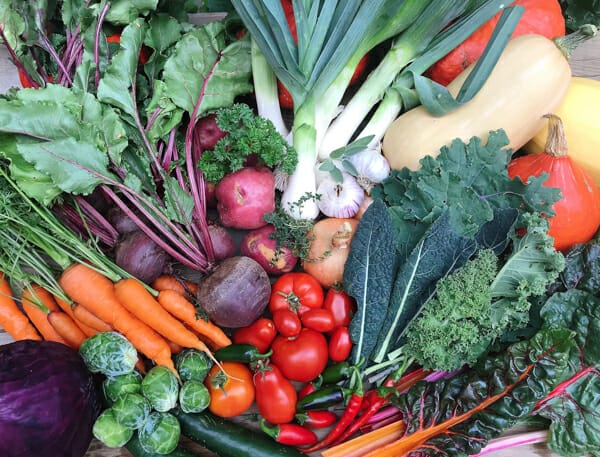
Also Read: When Are Fruits & Veggies Ripe on the Prairies, Reducing Food Waste, Food Trends 2021, 5 More Ways to Save Money on Groceries
What Do I Mean By Local?
My definition of “local” changes with the seasons. Sure, it’s possible to survive a prairie winter on local food with careful planning and preserving, but I’m not that person. I appreciate modern conveniences and don’t think there’s a need to be that severe in our approach to food. So my definition of local expands and contracts with the seasons.
In summer, when local fruits and veggies are in abundance – I’m extremely local! I get my produce from my garden, the forest, a local U-Pick, the grower down the street or a local market.
In winter, when there’s six feet of snow on the ground, I use frozen or canned fruits and veggies and fresh produce that’s in season somewhere on my continent.
I love this line from my friend and fellow Professional Home Economist, Jennifer Dyck, “Choose local first and supplement with global flavour.”
Why I Prefer Local Seasonal Food
Here’s why I think it’s worth choosing local, seasonal foods when we can.
1.Flavour
I dream about the flavour of sun-sweetened strawberries, handfuls of freshly shelled peas and the first homegrown tomato. If you have ever tasted any of these, you know that there’s something special about the flavour of local, seasonal food. Maybe it’s because small, local growers can select specialty or heirloom varieties. Maybe it’s because of terroir – the flavour and taste imparted on food by the soil, climate and environment where it is grown. Maybe it’s because produce is ripened in the field and gets into your hands very quickly. Or maybe it’s because you know the growers and how much care they put into their produce. Probably it’s a combination of all these things that makes local, seasonal food taste so good.
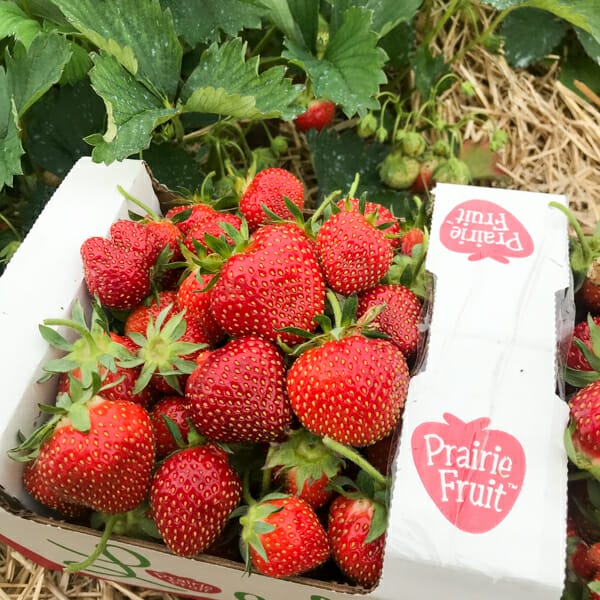
2.Affordability
When you buy produce that’s in season, you’ll pay less than choosing fruits and veggies that aren’t in season. It’s the law of supply and demand. Have you ever tried buying rhubarb in the winter? Even if you were to find it and it looked somewhat edible, you would pay a small fortune for it. Eating seasonal produce is a budget friendly way to shop. And, when you find a great deal, consider buying extra to preserve for the winter.
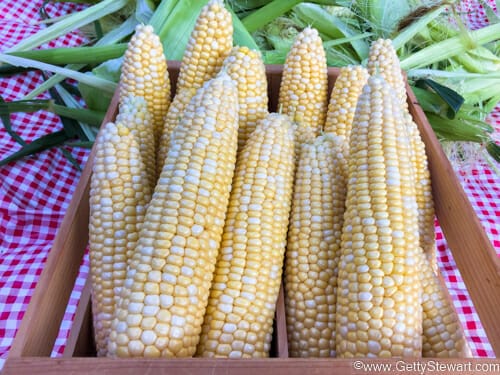
3.Easy Meal Planning
Seasonal eating helps break the monotony of having the same meals over and over again. By knowing what produce will be available soon, I can start planning and shopping for my favourite recipes or Googling new recipes I want to try. For example, in June, Farmers’ Markets will likely have plenty of lettuce, fresh herbs, radishes, kale, beets and maybe some haskaps or honeyberries. That means, my meal plan will include one or two different salads a week and my grocery list will include salad toppers like feta, pepitas, walnuts, hemp hearts and fixings for some great homemade salad dressings. Then, within just a couple of weeks, my meal plans will change again as I get ready to enjoy the next produce coming along.
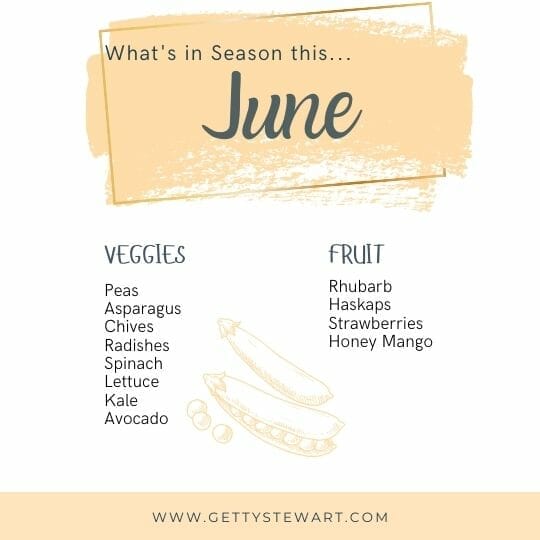
Click here for a chart of fruits and vegetables in season on the prairies by month.
4.Natural Rhythm
You’ve probably noticed that what you eat in the winter is different than what you eat in the summer. In winter, we tend to eat warm, thick, rich foods like soups, stews and baked pasta that make us want to curl up under a blanky. In summer, we eat cool, refreshing foods like salads, grilled meats, fruits and berries that fuel us to be more active. This type of eating follows the natural rhythms of our activity level and where we live.
It’s no coincidence that local, seasonal food matches those needs. That’s nature’s way. In spring, there are nutrient rich dark leafy greens followed closely in summer by sweet, juicy refreshing foods like berries and cucumbers, followed by hearty root veggies in the fall and then Vitamin C boosting citrus from our Southern neighbours in the winter.
Adding a variety of seasonal produce to your meals is always a good strategy for your body.
5.Trust in Local & Canadian Producers
Personally, I have more faith and trust in the quality and safety of local and Canadian produced foods than foods produced in other parts of the world. Our standards, regulations and testing (while not perfect) are among the toughest in the world.
Yes, there are scammers everywhere, but the closer you get to the source of your food, the more confident you can be.
The further we get away from the producer, the greater the opportunities for food fraud, food safety violations and unfair labour practices.
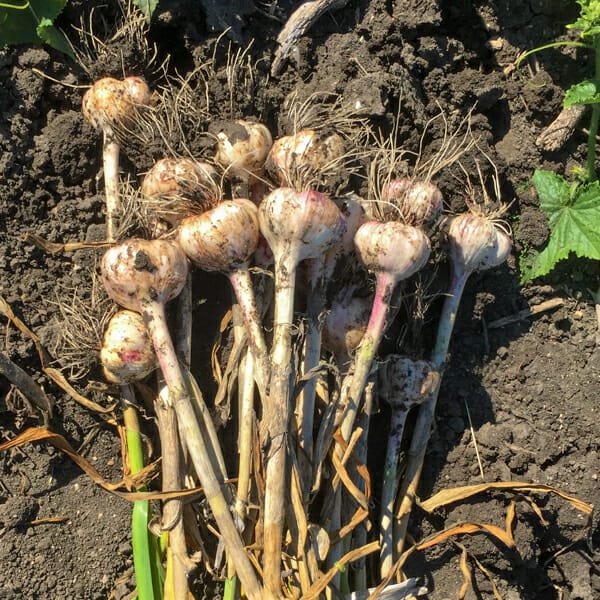
6.Support the Local Economy and Food Landscape
Local, national and international food all play an important part of our food system. I am incredibly grateful that Canada has one of the world’s safest and most reliable food systems and that we have access to food from around the globe. I also think having a strong local food economy adds to that and makes our overall food system even stronger and more resilient. Local growers, processors, retailers and the network of businesses that support them strengthen our communities just like any vibrant business. We need them, just as much as they need us.
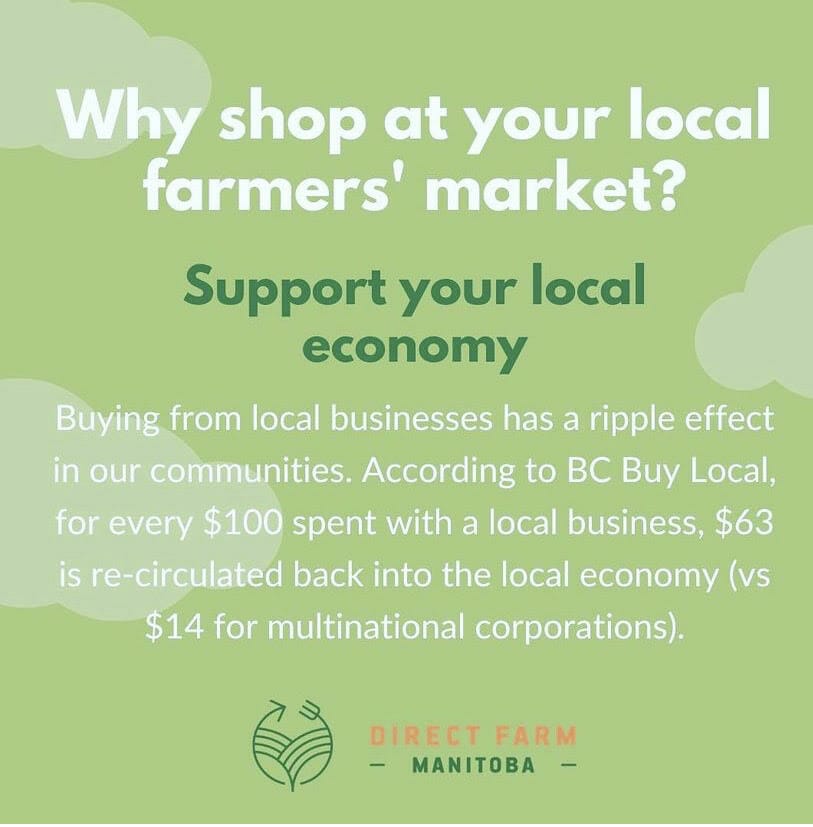
These local growers are also the keepers of seeds, knowledge and practical experience in growing unique crops in a specific location. Not only does this lead to great tasting local food, but we know that seed and crop diversity is critical to adapting to climate change and other challenges. We need to ensure that seed-saving and small-scale growing knowledge continues to thrive and be passed down to future generations.
I believe we need all players at every level to ensure we continue to have a robust, safe and reliable food system for all.
7.The Environment
I don’t want to suggest that eating local, seasonal food is the best thing you can do for the environment in the kitchen. It can be a part of how we reduce our environmental footprint in the kitchen , but it is not the most important piece. The environmental benefits are small (read this and read this) and all depends on the growing, storage and distribution processes. Sometimes, there are benefits to larger operations where there are economies of scale. (As you can see, it’s complicated!).
I spoke about seasonal eating and sustainability on a recent podcast on Kristina Hunter Flourishing. You can listen on Spotify here: How to Enjoy Seasonal Foods & Why
If your goal is to reduce your food footprint and eat more sustainably, you’d be better off eating less processed foods, reducing the amount of packaging in food, reducing food waste at home and reducing red meat consumption.
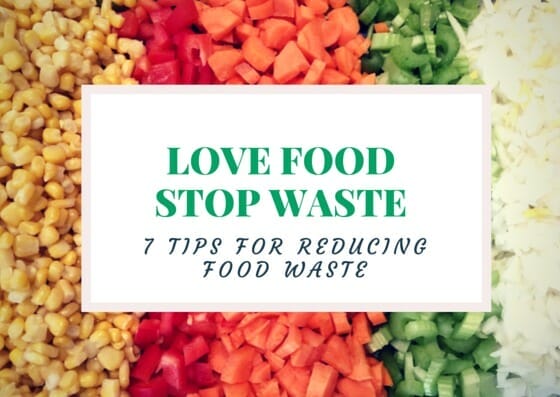
Sourcing Local, Seasonal Food
You don’t have to grow your own! I enjoy doing it, but I understand many people don’t have the time or space or simply don’t enjoy it. That’s cool! There are plenty of other ways to access local, seasonal foods. Like we do here in Manitoba, I bet there are various resources listing where you can find local produce. Look for small markets, farmers’ markets, U-pick farms, Community Supported Agriculture (CSAs), listings of producers that sell from their own location and various groups that sell local produce.
Here in Manitoba, check out the Prairie Fruit Growers’ Association for info on U-pick farms and Direct Farm Manitoba for farmers markets, CSA’s or farmers that sell direct. Of course, you can also find local produce in many small, local shops and large grocery stores.
I’d love to hear your thoughts and opinions on eating local, seasonal foods. Leave a comment below or tag me on Instagram at #getgettys or Facebook @GettyStewart.HomeEconomist.
Sign up to get articles by Getty delivered to your inbox. You’ll get recipes, practical tips and great food information like this. Getty is a Professional Home Economist, speaker and writer putting good food on tables and agendas. She is the author of Manitoba’s best-selling Prairie Fruit Cookbook, Founder of Fruit Share, a mom and veggie gardener.

